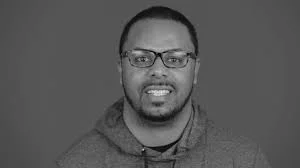Black Americans say they often experience difficulty with police that whites don't experience: extra scrutiny, harassment, profiling, even violence. Police say they have a difficult job that others just don't understand. What's it like to be both black and a police officer?
Read MoreSince the creation of the first SWAT teams in the 1960s, militarized police units have multiplied. SWAT teams can rescue hostages or handle emergencies – but are they used that way? Do they increase public safety? And what’s the impact on the public, and on officers?
Read MoreThe word “torture” conjures images of Abu Ghraib in Iraq, or waterboarding at CIA black sites. But in the 70s and 80s, torture went on in parts of the Chicago Police Department for years. We’ll learn what happened, and we’ll talk about the consequences for civilians and the justice system.
Read MoreIn the US, we incarcerate our fellow citizens at the highest rate in the world. And once they are in prison, we give the incarcerated not another thought. But one program works to help improve our imprisoned population, by teaching them college courses inside – along with college students, from the outside.
Read MoreCriminal Injustice returns with new episodes on January 8, 2019. Until then, we're reposting some of our favorite past interviews. This episode originally appeared Sep 18, 2018.
Read MoreWhen the police kill an unarmed black man, we know the family and community suffer. But what about other people – particularly Black Americans beyond those closest to the victim – what’s the impact on them?
Read MoreWe often hear about new methods police try to achieve better results against crime. But do the police have any reason to believe that their new approaches will work? Are their new initiatives based on hope, or on actual evidence that they will really help?
Read MoreWith every police shooting of an unarmed civilian, we hear calls for civilian oversight of police. But just creating an oversight agency is no magic bullet. What does a civilian review board need to succeed? What’s the evidence on the success of civilian oversight?
Read MoreThe Supreme Court banned racial discrimination in jury selection decades ago. But some prosecutors refused to abide by the rules. They developed work arounds, including sorting jurors by their reactions to the OJ Simpson verdict. Now the NAACP Legal Defense and Educational Fund (LDF) argues that using the OJ verdict as racial discrimination tool violates the Constitution.
Read More
Surveillance cameras are everywhere in American cities and
towns. They’re touted as crime fighting tools, but do they
really work? Are they worth the cost – in money, and in
privacy? Dr. Nancy LaVigne, vice president for justice
policy, of the non-partisan Urban Institute is the lead author
of the largest study of the effectiveness of surveillance
cameras.
Female police officers bring a unique, positive skill set to
the job. They communicate better, and have a special talent
for de-escalation. In an era when we want less force and
more de-escalation, should the future of policing be female?
When juveniles face criminal charges, most end up on probation. This should put their young lives on track. But too often, it’s just another set of rules, and kids fall into deeper trouble. Can we transform probation for juveniles, so more kids don’t become adult offenders?
Read MoreEvery four years, the whole sports-loving planet is watching soccer’s World Cup. Soccer is the world’s most popular sport – so how did its governing body, FIFA, become the focus of the most massive corruption scandal in sports history? And why was that scandal broken by U.S. law enforcement?
Criminal Injustice returns with a new season on September 4, 2018. Until then, we're reposting some of our favorite past episodes. This episode originally appeared February 20, 2018.
Read More[copy]
Read MorePrivate prisons hold over 100,000 people in the U.S. Some say they provide needed flexibility as corrections populations change and budgets shrink. But what really happens when punishment is about profit?
Lauren-Brooke Eisen is Senior Counsel at the Brennan Center’s Justice Program and author of Inside Private Prisons: An American Dilemma in the Age of Mass Incarceration.
Read MorePrisons in the U.S. frequently use long-term solitary confinement, even though the evidence makes clear that solitary has devastating effects on prisoners’ mental and physical health. Some authorities call long-term solitary nothing short of torture. So what can we make of our prisons using solitary for people with significant disabilities? If solitary devastates so-called normal prisoners, what does it do to those with severe physical or cognitive impairments?
Read MoreIn the US, we incarcerate our fellow citizens at the highest rate in the world. And once they are in prison, we give the incarcerated not another thought. But one program works to help improve our imprisoned population, by teaching them college courses inside – along with college students, from the outside.
Read MoreEvery four years, the whole sports-loving planet is watching soccer’s World Cup. Soccer is the world’s most popular sport – so how did its governing body, FIFA, become the focus of the most massive corruption scandal in sports history? And why was that scandal broken by U.S. law enforcement?
Read MoreWe often hear that police work requires split-second responses to keep officers and the public safe. But this might be less true than we think. Can we build a better cop, by training them to slow things down?
Read More


















